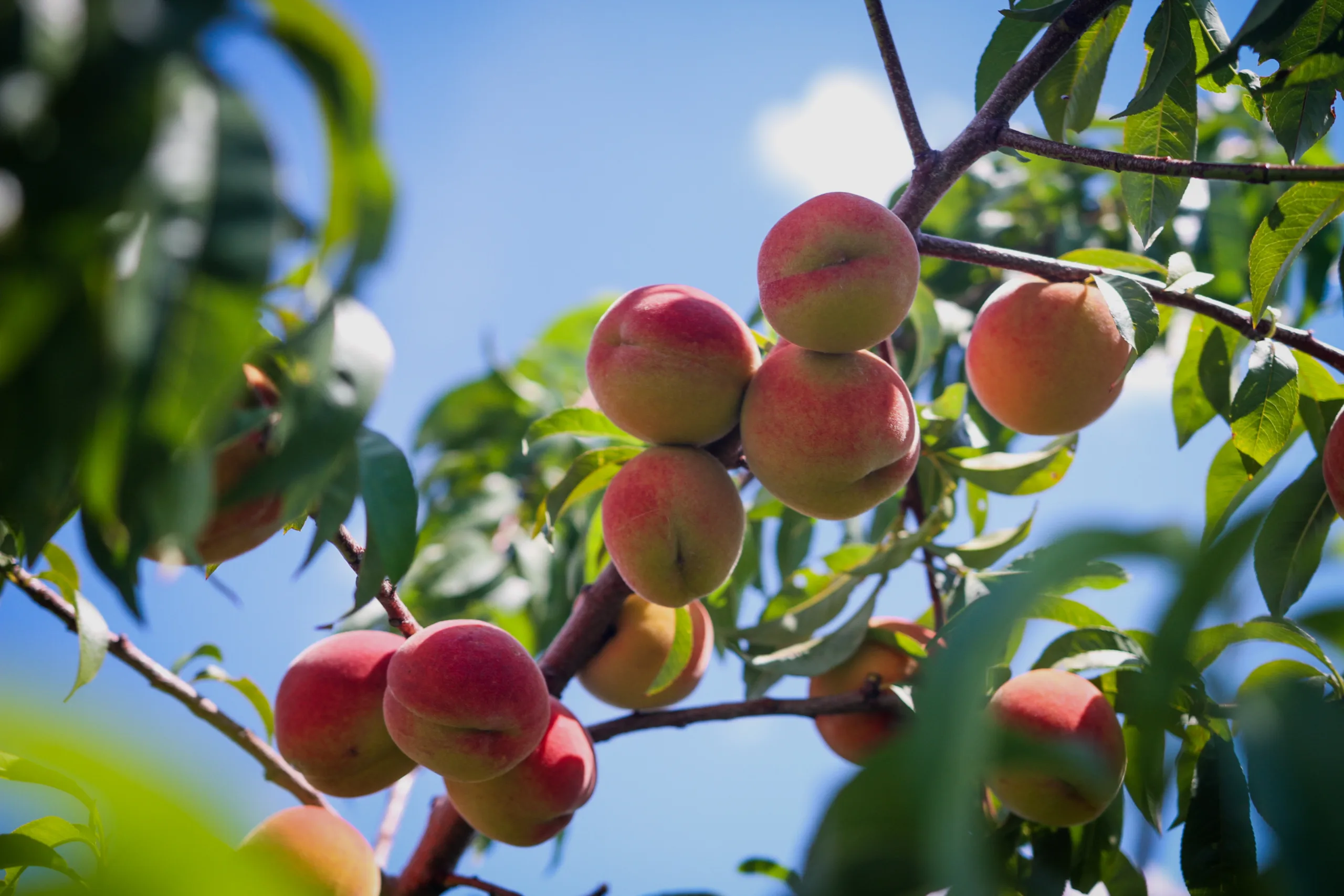Are you following a Low FODMAP diet and wondering if you can eat peaches? If so, you are in the right place! This article will answer the question of whether or not peaches are Low FODMAP, as well as provide tips on how to incorporate them into your diet. Whether you are looking for a delicious snack or to add flavor to a dish, this article will help you understand how peaches can fit into your Low FODMAP lifestyle.
The Low FODMAP Diet is a dietary approach that eliminates fermentable carbohydrates, known as FODMAPs, from the diet to help reduce symptoms of irritable bowel syndrome (IBS), such as abdominal pain, bloating and diarrhea.
Foods to Avoid on Low FODMAP Diet
If you suffer from irritable bowel syndrome (IBS) or other digestive problems, you may have heard of a low FODMAP diet. This diet is designed to reduce the intake of certain carbohydrates known as FODMAPs, which are found in many common foods. To get the most out of the diet, it is important to know which foods should be avoided.
The key foods to avoid on a low FODMAP diet are those that contain high amounts of fructose, lactose, fructans, and polyols. These include certain fruits and vegetables; dairy products; wheat and other grains; legumes; and foods with added sweeteners or sugar alcohols.
Fruits that should be avoided include apples, apricots, cherries, mangoes, pears, peaches, plums and watermelon. Vegetables such as artichokes, garlic and onions should also be avoided. Dairy products such as cow’s milk, ice cream and yogurt should be replaced with lactose-free alternatives. Wheat-based products such as bread and pasta should be replaced with gluten-free alternatives. Legumes like beans and lentils should also be avoided.
Finally, foods that contain added sweeteners such as honey or high fructose corn syrup should be avoided. Additionally, sugar alcohols like sorbitol or xylitol should not be consumed in excess as they can cause digestive issues for some people.
By avoiding these high FODMAP foods on a low FODMAP diet, you will reduce your symptoms of IBS or other digestive issues significantly. It is important to note that this is not an elimination diet—it is simply a way to limit your intake of certain types of carbohydrates in order to improve your digestive health.
Is Peach Low FODMAP?
Peaches are considered low FODMAP in small servings. Fresh peaches contain sorbitol which is a FODMAP sugar that can trigger IBS symptoms in some individuals. However, when consumed in a serving size of one medium peach or 125g, it is low enough to be tolerated by many people with IBS. If you’re feeling symptoms after eating peaches, try reducing your serving size to see if this helps. Canned and frozen peaches are generally considered to be low FODMAP, but make sure to check the ingredients for added sugars or sweeteners which may contain higher FODMAP sugars.
Click here to preview your posts with PRO themes ››
It’s also important to note that there are certain high-FODMAP fruits and vegetables which should be avoided if you have IBS. So while peaches are generally considered low FODMAP, it is important to monitor your own FODMAP intake and signs of any potential reactions.
The Benefits of Eating Low FODMAP Foods
Eating a low FODMAP diet has become increasingly popular in recent years. This diet is designed to help with digestive issues, such as irritable bowel syndrome (IBS). It limits the amount of fermentable carbohydrates, known as FODMAPs, that are consumed. While this may sound restrictive, there are plenty of benefits to eating a low FODMAP diet.
One of the main benefits of a low FODMAP diet is improved digestive health. By limiting the amount of FODMAPs you eat, you can reduce the symptoms associated with IBS and other digestive issues. This can lead to less bloating, abdominal pain and discomfort, and improved overall digestive health.
Another benefit of eating low FODMAP foods is that they are often packed with essential vitamins and minerals. Many low-FODMAP foods are also high in fiber, which can help keep you regular and promote good gut health. Additionally, many of these foods are plant-based and naturally gluten-free, making them ideal for those following a vegan or gluten-free diet.
Finally, eating low-FODMAP foods can make it easier to stick to a healthy eating plan. Since these foods tend to be lower in calories and higher in nutrients than their high-FODMAP counterparts, you’ll be getting more bang for your buck nutritionally speaking. Plus, there’s no need to worry about feeling deprived or missing out on delicious meals since there are plenty of delicious recipes available online and in cookbooks that use only low-FODMAP ingredients.
In conclusion, there are many benefits to eating a low-FODMAP diet. Not only can it help improve your digestive health but it can also provide essential vitamins and minerals while also making it easier to stick to a healthy eating plan.
Symptoms of Irritable Bowel Syndrome (IBS)
Irritable Bowel Syndrome (IBS) is a condition that affects the large intestine and causes a range of symptoms. Common symptoms of IBS include abdominal pain and cramps, bloating, gas, diarrhea, constipation, and changes in bowel habits. Other symptoms may include fatigue, nausea, difficulty sleeping, and anxiety. IBS can also cause changes in appetite and weight loss or gain. In some cases, people with IBS also experience urinary symptoms such as an urgent need to urinate or passing small amounts of urine.
It is important to note that not everyone with IBS will experience all these symptoms and the severity of each symptom can vary from person to person. The most common symptom is abdominal pain or discomfort that is usually relieved after having a bowel movement. Other symptoms may be associated with specific triggers such as certain foods or stress. Some people may have episodes of severe symptoms followed by periods of remission with few or no symptoms at all.
Click here to preview your posts with PRO themes ››
IBS is a chronic condition that can have a significant impact on quality of life but it is not life-threatening. Treatment options include lifestyle modifications such as stress management techniques, dietary changes, exercise, and medications when necessary. It is important to work with your doctor to find the best treatment plan for you if you have been diagnosed with IBS.

What is a Low FODMAP Diet?
A low FODMAP diet is a specific eating plan designed to help reduce symptoms of Irritable Bowel Syndrome (IBS). It involves avoiding foods that contain certain carbohydrate molecules known as fermentable oligosaccharides, disaccharides, monosaccharides and polyols (FODMAPs). These molecules are poorly digested by some people and can cause digestive discomfort, bloating and gas. By following a low FODMAP diet, it is possible to reduce or eliminate these symptoms.
Benefits of Following a Low FODMAP Diet
There are many potential benefits to following a low FODMAP diet. Studies have shown that people with IBS who follow this type of diet experience significant improvements in their symptoms. Additionally, reducing intake of high-FODMAP foods may help improve digestion and nutrient absorption. Some people also report improved gastrointestinal comfort after following a low FODMAP diet.
How to Follow a Low FODMAP Diet
The most effective way to follow a low FODMAP diet is to work with a registered dietitian or nutritionist who specializes in this type of eating plan. This professional can help you create an individualized meal plan that meets your needs and preferences. In general, eating plenty of low-FODMAP fruits and vegetables, lean proteins, nuts and seeds, gluten-free grains, and healthy fats is recommended when following this type of diet. Additionally, it’s important to be mindful of portion sizes; eating too much of any food – including those that are low in FODMAPs – may still cause digestive distress and other symptoms.
Low FODMAP Substitutes for High FODMAP Foods
Eating a low FODMAP diet can be challenging due to the high number of foods that contain FODMAPs. Fortunately, there are a variety of low FODMAP substitutes for high FODMAP foods that make it easier to stick to a low FODMAP diet.
For example, many high FODMAP fruits and vegetables can be easily swapped out for low FODMAP options. Common high FODMAP fruits such as apples, pears and peaches can be replaced with bananas, oranges or strawberries. High FODMAP vegetables such as cauliflower, garlic and onions can be swapped out for cabbage, mushrooms or zucchini.
High FODMAP grains such as wheat and rye should be swapped out for gluten-free alternatives such as quinoa, brown rice or buckwheat. Dairy products containing lactose can also be replaced with lactose-free milk or cheese substitutes made from soy or almond milk.
Click here to preview your posts with PRO themes ››
Finally, legumes are generally considered high in FODMAPs but there are some low-FODMAP varieties such as green beans, edamame and chickpeas. To make sure you’re getting enough protein in your diet without eating high-FODMAP legumes you can substitute with tofu, tempeh or canned fish such as tuna or salmon.
Overall, there is no need to feel restricted on a low-FODMAP diet since there are plenty of delicious and nutritious substitutes available for high-FODAP foods. With some simple swaps and substitutions you can easily stick to your diet while still enjoying a variety of delicious meals.
How to Incorporate Peaches into a Low FODMAP Diet
Peaches are a delicious, nutritious and versatile fruit that can be enjoyed all year round. They are an excellent source of dietary fibre and vitamins A and C, as well as being low in calories. For those on a low FODMAP diet, incorporating peaches can be easy and delicious. Here are some tips to help you enjoy peaches while following a low FODMAP diet.
Choose ripe peaches – when selecting peaches, look for ones that are ripe but not overripe. Ripe peaches should have a yellowish-orange hue, with no green spots or bruises on the skin. Avoid buying overly soft or mushy peaches as these may contain higher levels of FODMAPs.
Eat in moderation – while peaches are generally considered to be low in FODMAPs, it is always best to consume them in moderation. Eating too many can lead to digestive discomfort, so it is recommended to start with a small portion (e.g., half a peach) and increase gradually if no symptoms occur.
Cut into smaller pieces – cutting up the peach into smaller pieces before eating can help reduce the amount of FODMAPs consumed as larger pieces may contain more FODMAPs than smaller ones.
Mix with other foods – adding other foods such as nuts or seeds can help reduce the amount of FODMAPs in the overall meal or snack. This is because the other foods contain lower amounts of FODMAPs than the peach.
Include canned varieties – canned peaches can also be part of your low FODMAP diet as they typically contain fewer FODMAPs than fresh varieties due to their processing method. Just make sure to check the label for added ingredients that could contain higher levels of FODMAPs such as honey or high fructose corn syrup.
By following these tips you can easily incorporate peaches into your low FODMAP diet and enjoy their sweet flavour without having to worry about digestive issues.

Conclusion
Peaches are generally considered low FODMAP, since the average serving size contains only trace amounts of FODMAPs. That said, those with IBS should be aware that some peaches may contain higher levels of FODMAPs than others. If you have IBS and are consuming peaches, it is important to monitor your symptoms and adjust your intake accordingly. It is also important to remember that other factors, such as ripeness and variety, can influence the amount of FODMAPs present in a peach.
In conclusion, peaches can be enjoyed in moderation by most people with IBS. However, due to the potential for variations in FODMAP content, it is important to pay attention to your portion size and symptoms when adding this fruit to your diet.

